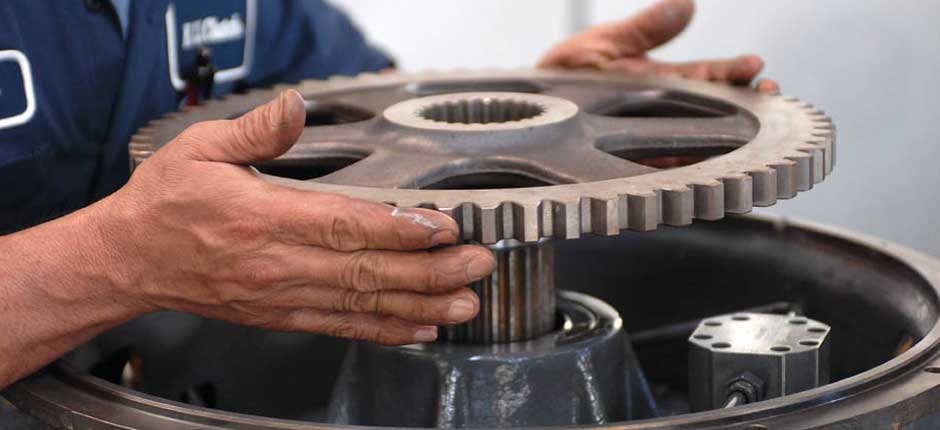A PTO (power take-off) transfers mechanical energy from a truck’s engine to external equipment. A splined shaft installed on a vehicle allows equipment with mating gears to connect to the power output.
Trucks that use PTO systems can tilt their loading platform, run a leaf blower, or inflate tires using a compressor. You see these work vehicles on construction sites and in garbage trucks.

Types of PTOs
Power take-offs transfer mechanical energy from the engine to another piece of equipment, like a drill or plow. Those pieces of equipment can then use the power to do other functions, like digging or pushing snow.
There are several different types of power take offs available. For example, flywheel PTOs can only be activated when the vehicle is stopped, and lever or air shift PTOs require the engine to run to engage.
These PTOs drive external hydraulic pumps, generators, air compressors, and other equipment that can’t run on battery power. Therefore, it’s essential to choose a PTO that can handle the load of the equipment you’re using to drive and its speed and torque requirements. This can be determined using a PTO calculator, which helps you calculate horsepower, speed, and torque. You can also determine whether the PTO needs to be able to run in reverse or not.
Variable Speed PTOs
Often used in waste company fleets to drive hydraulic pumps, these PTOs can be engaged while the vehicle is stopped or traveling. They are referred to as powershift or hot shift PTOs and typically can transmit full engine power through a direct clutch bolted to the OEM cardan shaft with a Logan shaft adapter.
A PTO 22 control arrangement conventionally provides remote power modules (RPMs) as data-linked expansion input/output modules devoted to ESC 24 and configured to control valve states of the PTO device. The RPMs are connected to a proprietary datalink 74, providing hardwire outputs 70 and hardwire inputs 75 to and from the load/aerial lift unit 2.
The system also includes a hybrid electric motor and generator coupled to the internal combustion engine. The PTO mechanism relates to the hybrid electric motor and generator, and a hydraulic pump is connected to and driven by the PTO. The PTO mechanism also receives a feedback signal from a pressure or ball detent type switch.
Constant Speed PTOs
Powerful power take offs are required for many vehicle applications, such as hydraulic pumping on fire trucks. Therefore, a “sandwich” split shaft unit is mounted between the engine and transmission. These units get the drive from the countershaft of the information to supply constant speed power to the PTO output shaft.
This allows a load such as a hydraulic pump to run at a specific output shaft rotation independent of the vehicle’s engine or ground speed. This can reduce fuel consumption and engine stress.
Select the powered equipment’s power requirements (hp) to determine which PTO suits your application. Also, note the desired direction of the driven equipment shaft rotation. PTOs rotate clockwise or counterclockwise as viewed from the vehicle’s rear when standing inside the driver’s cab. This information will help you select the correct PTO clutch type. Also, identify the transmission make and model used in your vehicle.
Rear Mount PTOs
A rear mount PTO, also known as a countershaft power take-off or thru shaft, replaces the average bearing cap on the back of specific transmissions. This style of PTO is commonly used on European trucks and is becoming more common in North America. It’s easy to install and prevents interference problems with side-mount power take offs.
Unlike the side/bottom mount PTO, this type of PTO does not mesh with the transmission gear. Instead, it picks up rotation through a mechanical clutch. This can cause noise if the grip isn’t correctly designed and the PTO isn’t mounted on the appropriate transmission mounting point. Parker Chelsea offers a variety of rear-mount PTOs for a range of different transmissions. Most of them feature SAE standard six-bolt and eight-bolt mounting apertures, while others use unique transmission-specific 10-bolt openings or even a split shaft that requires removing a section of the transmission. These are ideal for dump truck; man lift, and bucket/man hauler applications.